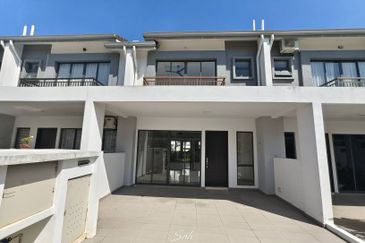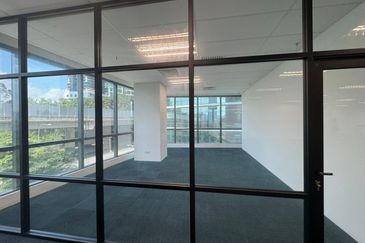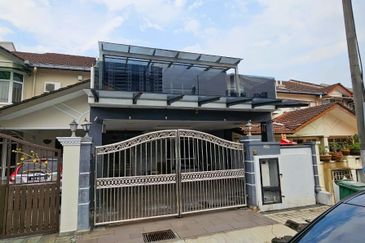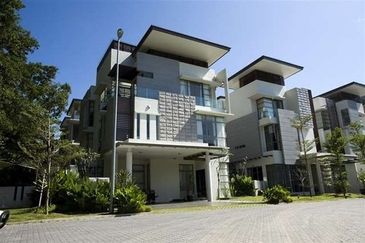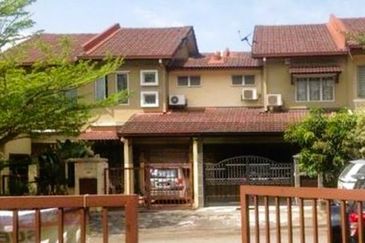
Mass housing development is the mass production of a few standard home designs that often fail to satisfy any actual house buyer’s need, thus inadvertently leading to the emergence of a spin-off industry known as “renovation”.
Renovation refers to varying the original design of a house by addition, deduction or a combination of both. Oftentimes, as soon as house buyers occupy their properties, they go about having them re-modelled to suit their individual needs and tastes.
Some of the most common changes are the widening of the kitchen area, the addition or merging of rooms, and horror of horrors, the paving of the “handkerchief-sized” grass frontage.
As common as this practice is though, excessive and indiscriminate renovations, approved or otherwise, make the whole neighbourhood appear disjointed, incongruous, uncoordinated, disharmonious and even at odds with the house next door, and as a result, the value of these properties suffer.
Typically, a terraced house owner has his house renovated based on some design he has found in his favourite architecture or design magazines. This is often done without taking into account the impact it would have on the aesthetics of his immediate neighbours, let alone the neighbourhood. The end result would be that either his house stands out from the others like a sore thumb or it is at odds with the immediate neighbours.
As such, the National House Buyers Association (HBA) would like to offer the following cautionary pointers for the benefit of wannabe renovators:
1 Ensure the house has been certified as ready for occupation
In their rush to renovate, some house purchasers do not wait for the Certificate of Fitness (CFO) or Certificate of Completion and Compliance (CCC) or Occupational Certificate (OC) to be issued, which would inadvertently cause delay across the board.
The fact is, no house owner is allowed to occupy his property before the issuance of any of these certificates. There have been cases where extensions to two or more linked units have caused an entire row of houses to sink and crack, especially where the housing estate is built on a landfill scheme or ex-sand mining land.
2 Be clear about what you need and what you want
Draw up your “wish list” and itemise them, then pare it down to suit your needs and budget. The downside of not estimating the renovation costs accurately or not at all (thinking it will be within your means) is that you may end up abandoning the works midway when funds are exhausted.

Seek the help of a quantity surveyor. He would know how to estimate the costs accurately unless the renovation work involved is so small that it makes engaging such a professional not worthwhile.
The next best alternative is for you to obtain a few quotations from a selection of builders or building contractors. Remember to ask for a breakdown, particularly of the more expensive or dispensable items, and most importantly, the time frame needed to complete these works. If the scale of the renovation is relatively complex and large, get a professional to help you out.
3 Get professionals: do not be penny wise and pound foolish
If the alteration works involve structural changes such as an extension with (i) removing column(s); and (ii) the addition of beam(s) to create room or space within your existing property, it pays to consult a qualified architect or a qualified engineer.
If you are not sure, then consult one on what needs to be done including whether their services are needed instead of engaging just a building contractor. Any added structure, without professional engineering input, may cause structural stress or even structural failure not only to the existing building but also to the neighbouring houses.
Their involvement may be a legal requirement. Otherwise, the Local Authority (LA) will not entertain applications, including the requisite Building Plan Approval, to carry out any of your planned works.
A building draughtsman may be engaged to facilitate your application to the LA for:-
(i) renovation works of a one-storey building not involving reinforced concrete or steel structure provided that the total built-up area does not exceed 100 sq m/about 1,076 sq ft; or/and
(ii) renovation works of a two-storey building not involving reinforced concrete or steel structure provided that the total built-up area does not exceed 300 sq m/about 3,230 sq ft.

For works exceeding the above, a qualified architect’s service is required and where works involve structural alteration, your application to the LA would require the input and endorsement of a qualified engineer.
4 Get a responsible builder or contractor
It is important to engage a responsible builder or contractor for such works. The right contractor may ensure timely completion and deliver quality workmanship without exceeding the budget. In choosing the right contractor, you may wish to be guided by the following criteria:-
(i) Shortlist the candidates on the basis of word-of-mouth recommendation, then interview them, with the assistance of a friend who is knowledgeable in this field before making a final decision.
(ii) Try to satisfy yourself about their financial background and track record. They usually operate either as sole proprietorships or partnerships or, at best, a small scale company, and therefore, their capital and financial resources are minimal.
(iii) Usually, building contractors do not have large permanent teams of competent or skilled workers; they are recruited ad hoc, and if he has such staff, it is usually a reliable indication of the health of his business.
(iv) At this time, construction workers comprise predominantly non-skilled and semi-skilled foreign workers. Therefore, before engaging the building contractor, enquire about the background of the workforce.
(v) Check out how many current projects he is undertaking. This indicates his available resources and concentration.
5 Find out the dos and don’ts from the local authority
You may require some professional help with this. This item comes after the wish-list and budget are done, but prior to your soliciting a quotation from selected contractors.
Most house owners may, at this stage, and prior to the engagement of any consultant, make enquiries with the local authority on the building requirements based on the nature of their intended renovation works.
For those who reside in Kuala Lumpur, the LA is Dewan Bandaraya Kuala Lumpur (DBKL), while for those who reside in Petaling Jaya, the likely LA is Majlis Bandaraya Petaling Jaya (MBPJ), and if the renovation is to be done in the Subang Jaya, Seri Kembangan or Puchong vicinity, it is Majlis Bandaraya Subang Jaya (MBSJ). One could check the assessment bills to verify the related LA.

You may check with the LA on the nature of the renovation; whether a professional is required to draw up plans and make submissions, or whether a standard form or pre-approved plans would suffice.
Simple jobs such as a kitchen extension may not require submissions for approval by an architect or draughtsman. Again, owners should seek written confirmation from the LA for recording purposes.
You may also enquire about the scope of works allowed, such as the requisite “setback” requirement, i.e. the minimum distance from the boundary for erecting your building or column and wall; and a check on the height restriction would also be helpful.
Datuk Chang Kim Loong is the Hon Secretary-general of the National House Buyers Association (HBA) and Ar YS Ng, HBA’s technical advisor. HBA could be contacted at:
Email: [email protected]
Website: www.hba.org.my
Tel: +6012 334 5676
This story first appeared in the EdgeProp.my E-weekly on Sept 24, 2021. You can access back issues here.
Get the latest news @ www.EdgeProp.my
Subscribe to our Telegram channel for the latest stories and updates
TOP PICKS BY EDGEPROP
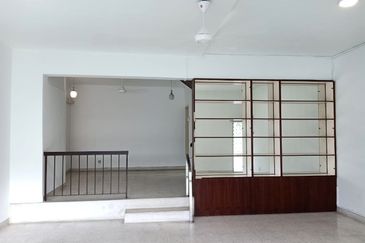
Taman Connaught (Sri Cendekia)
Cheras, Kuala Lumpur

Cemara Damai Residences @ Alam Damai
Cheras, Kuala Lumpur

VIVO Residential Suites
Jalan Klang Lama (Old Klang Road), Kuala Lumpur

Taman Tun Dr Ismail (TTDI)
Taman Tun Dr Ismail, Kuala Lumpur

TAMAN PADANG TEMU PERMATA
Melaka Tengah, Melaka

Victory Suites (The Face 2), KLCC
KL City, Kuala Lumpur


